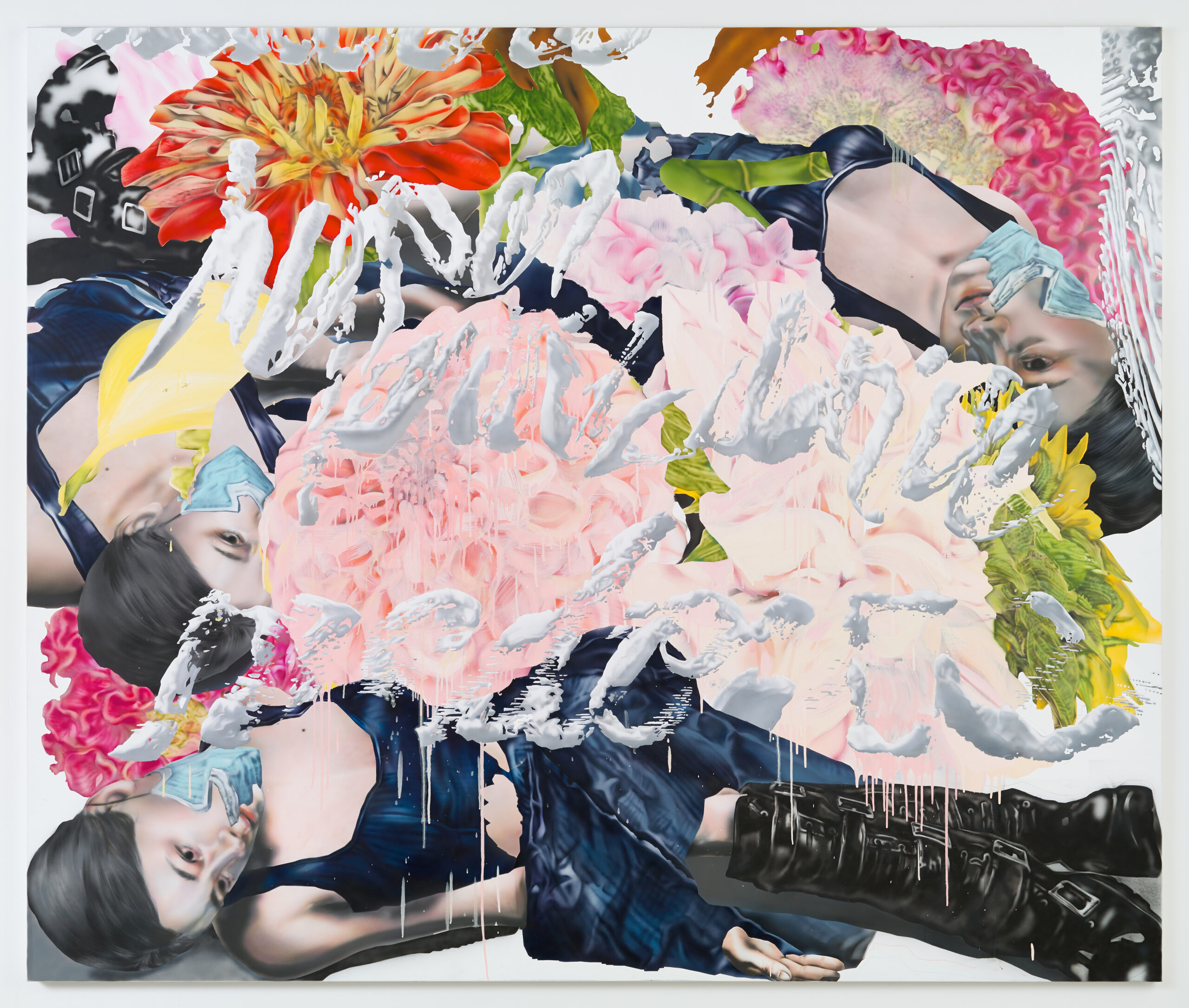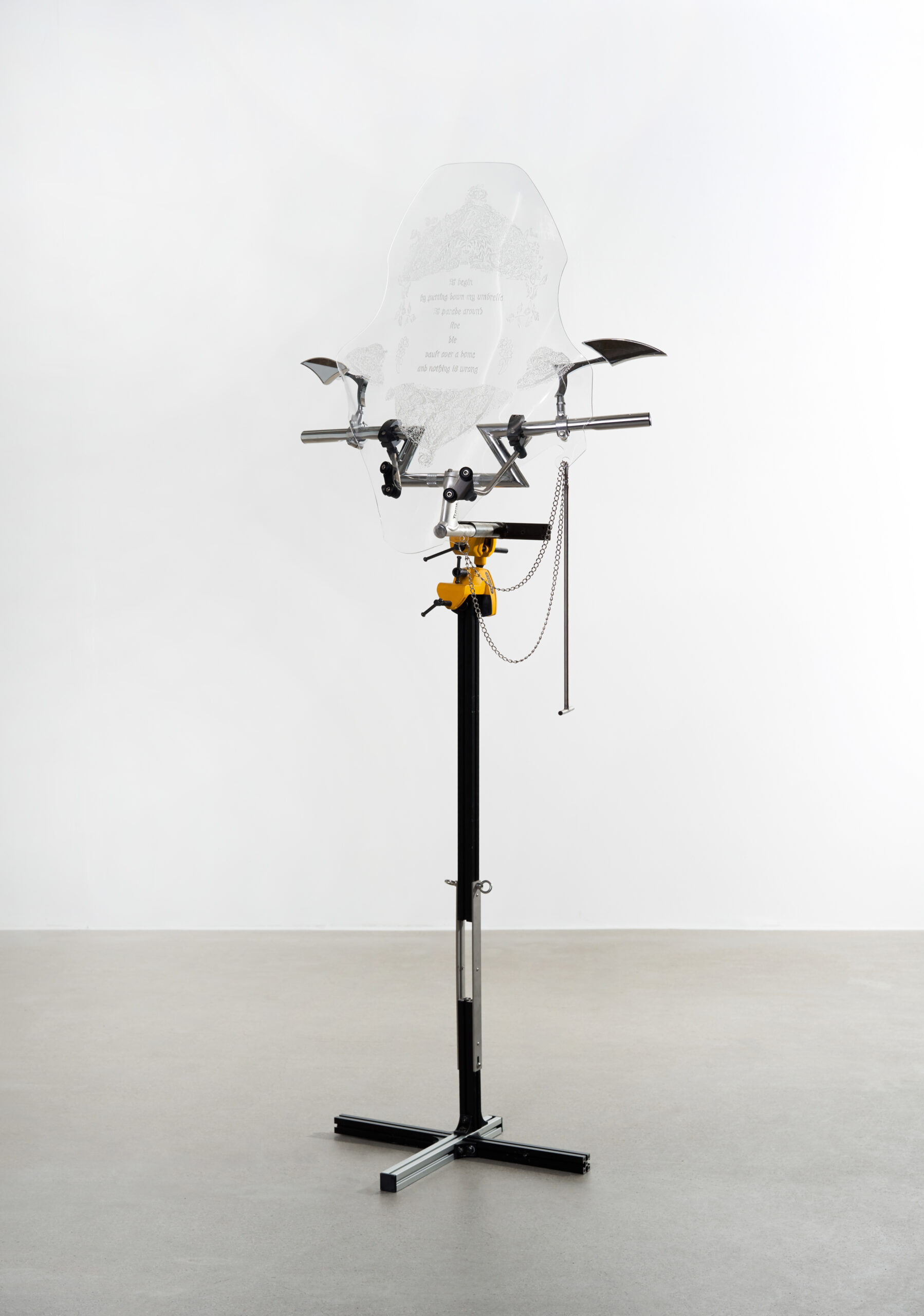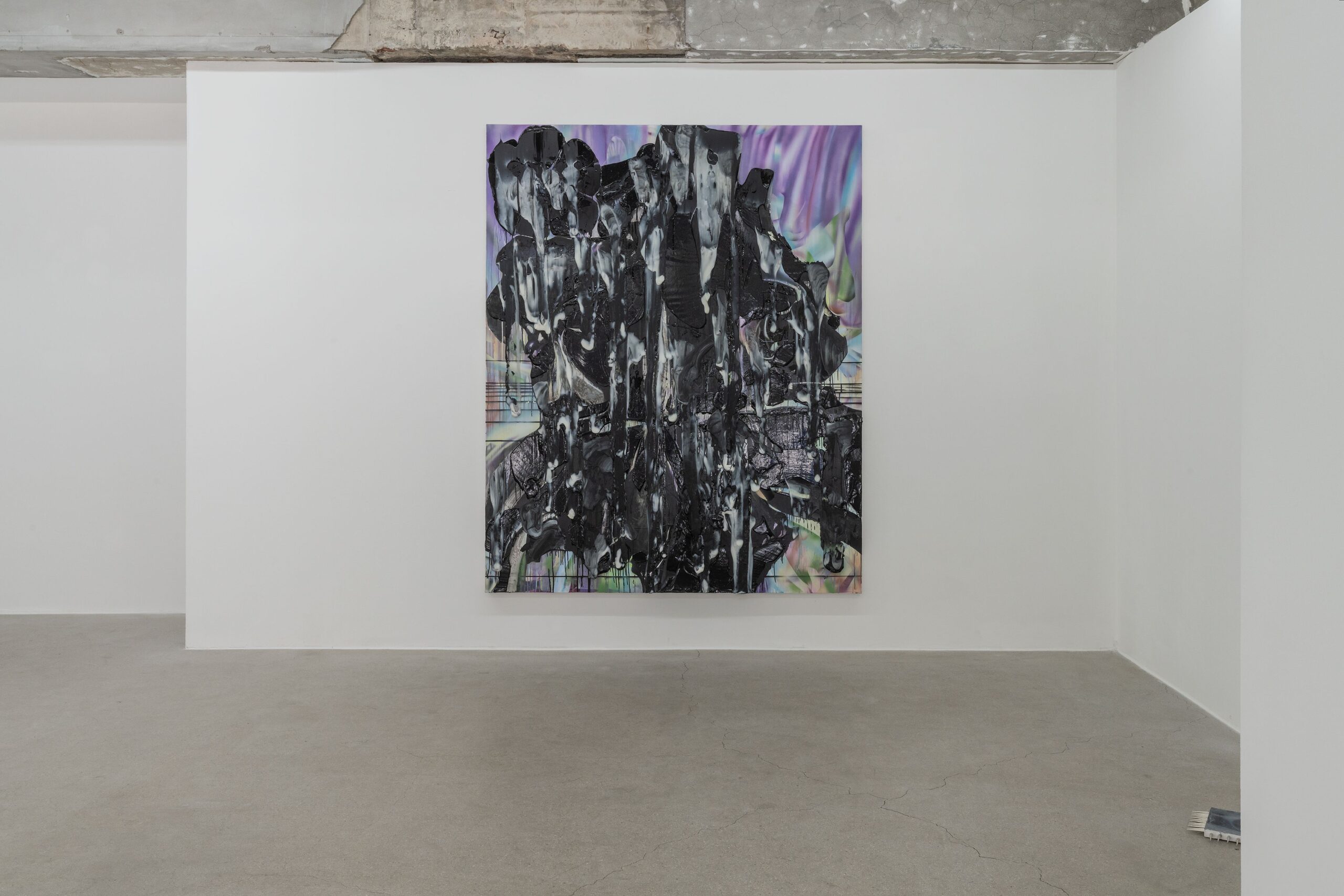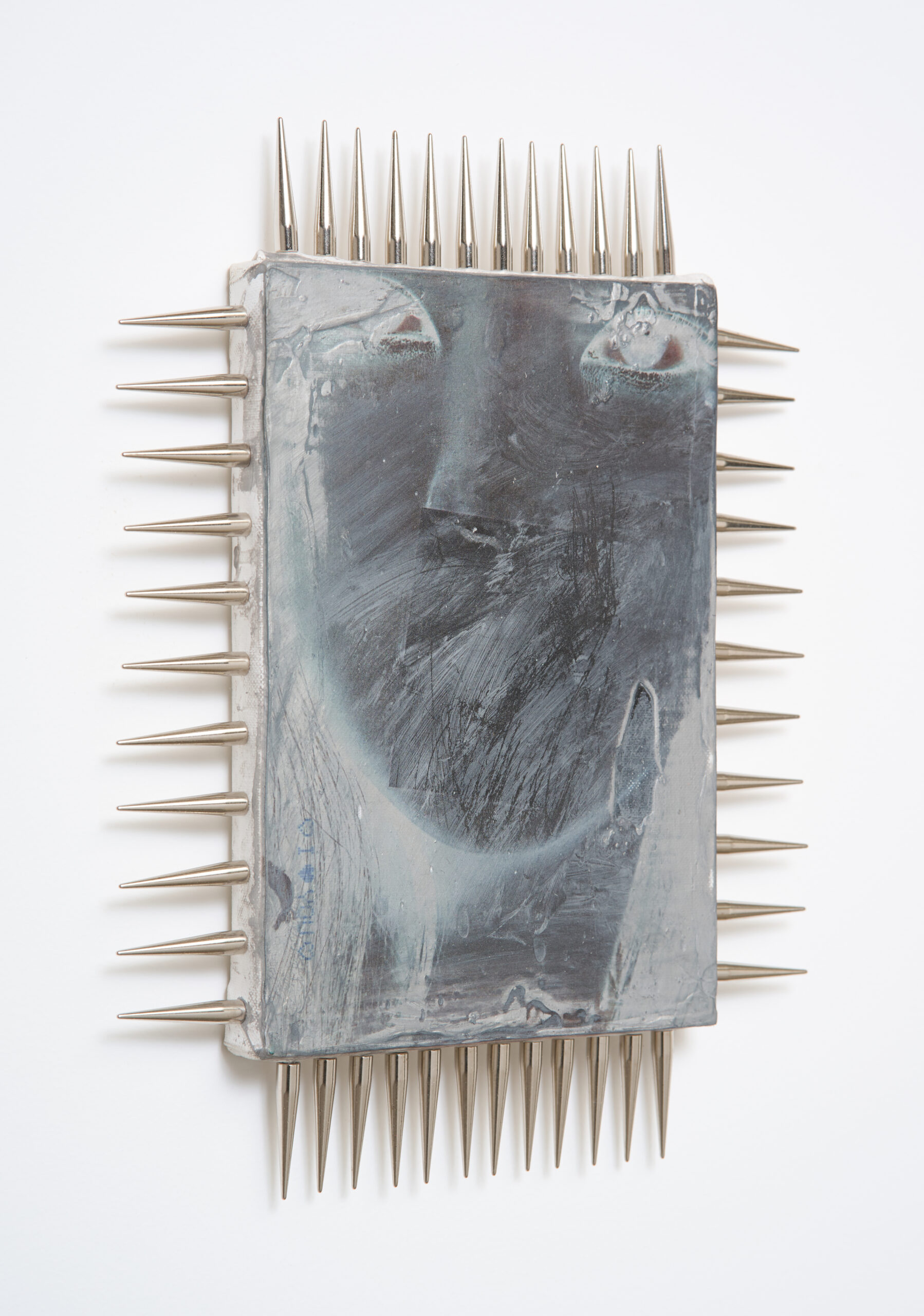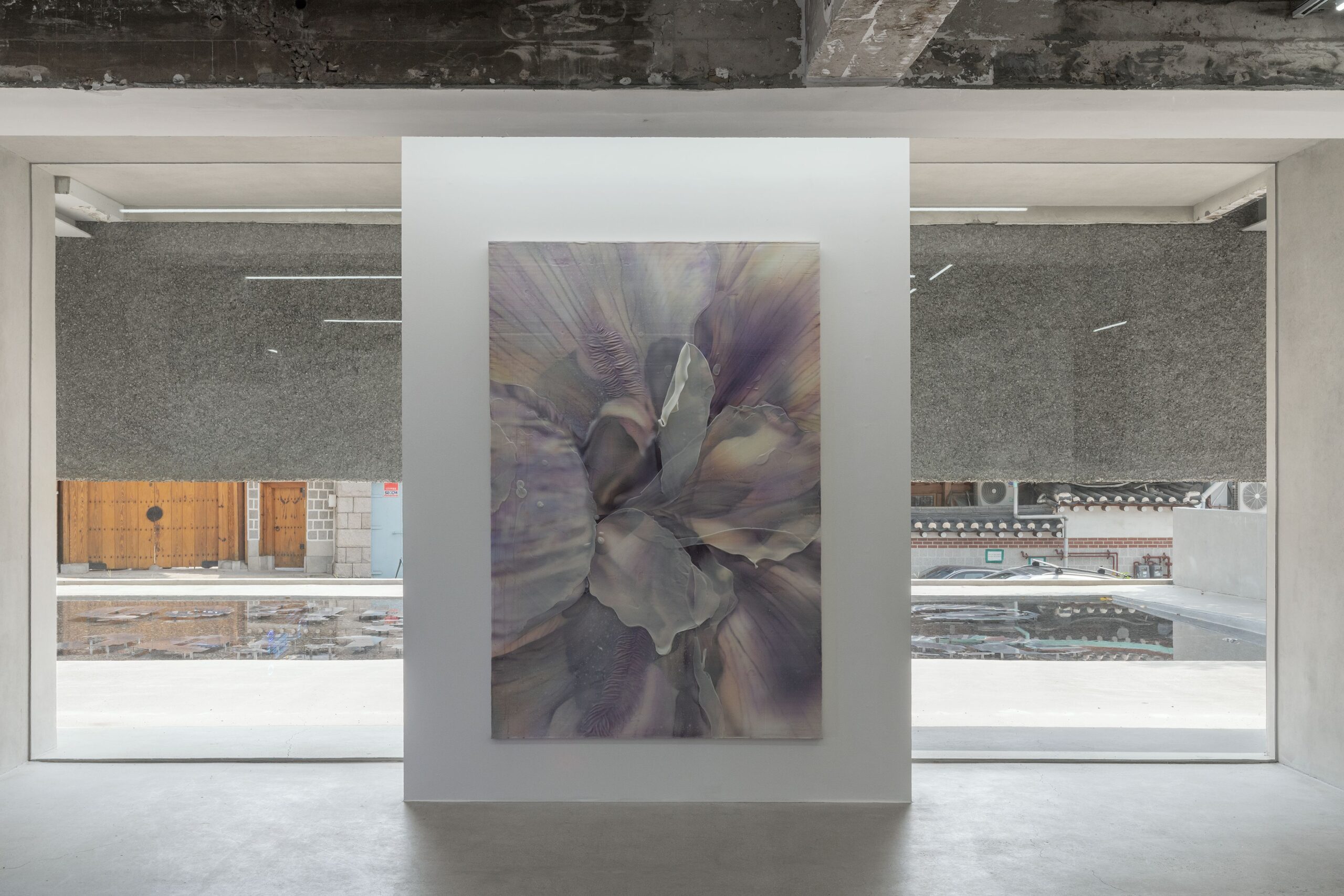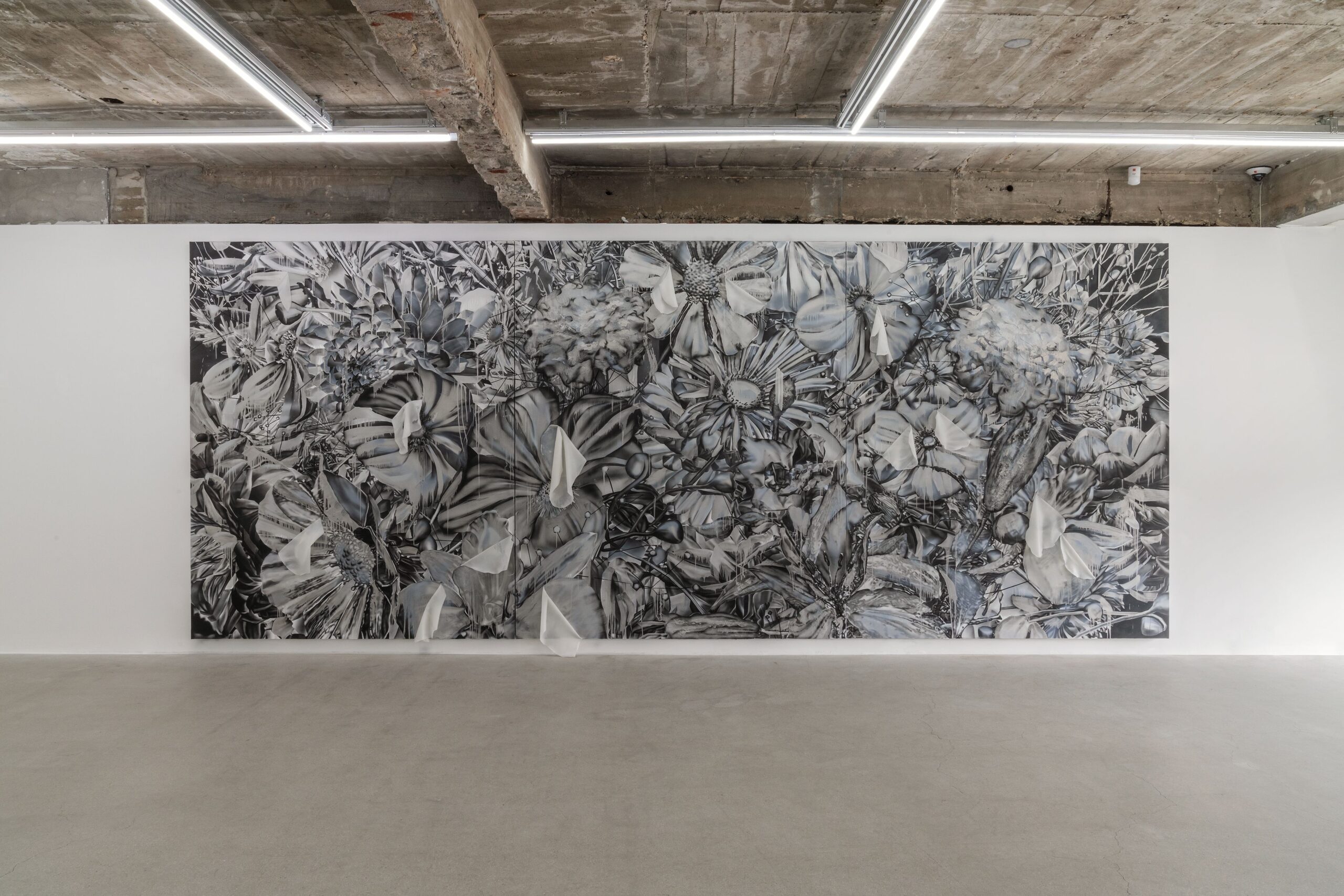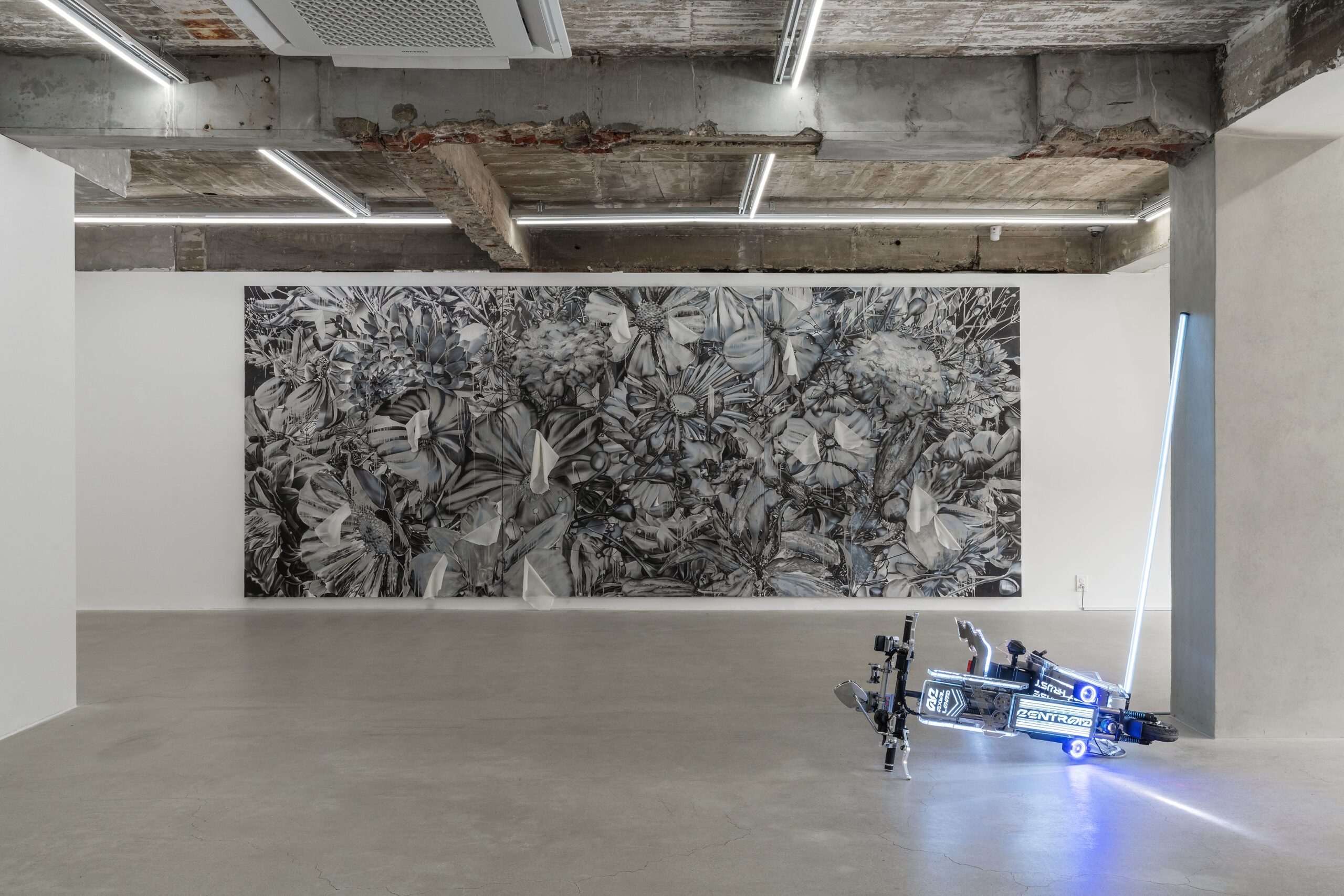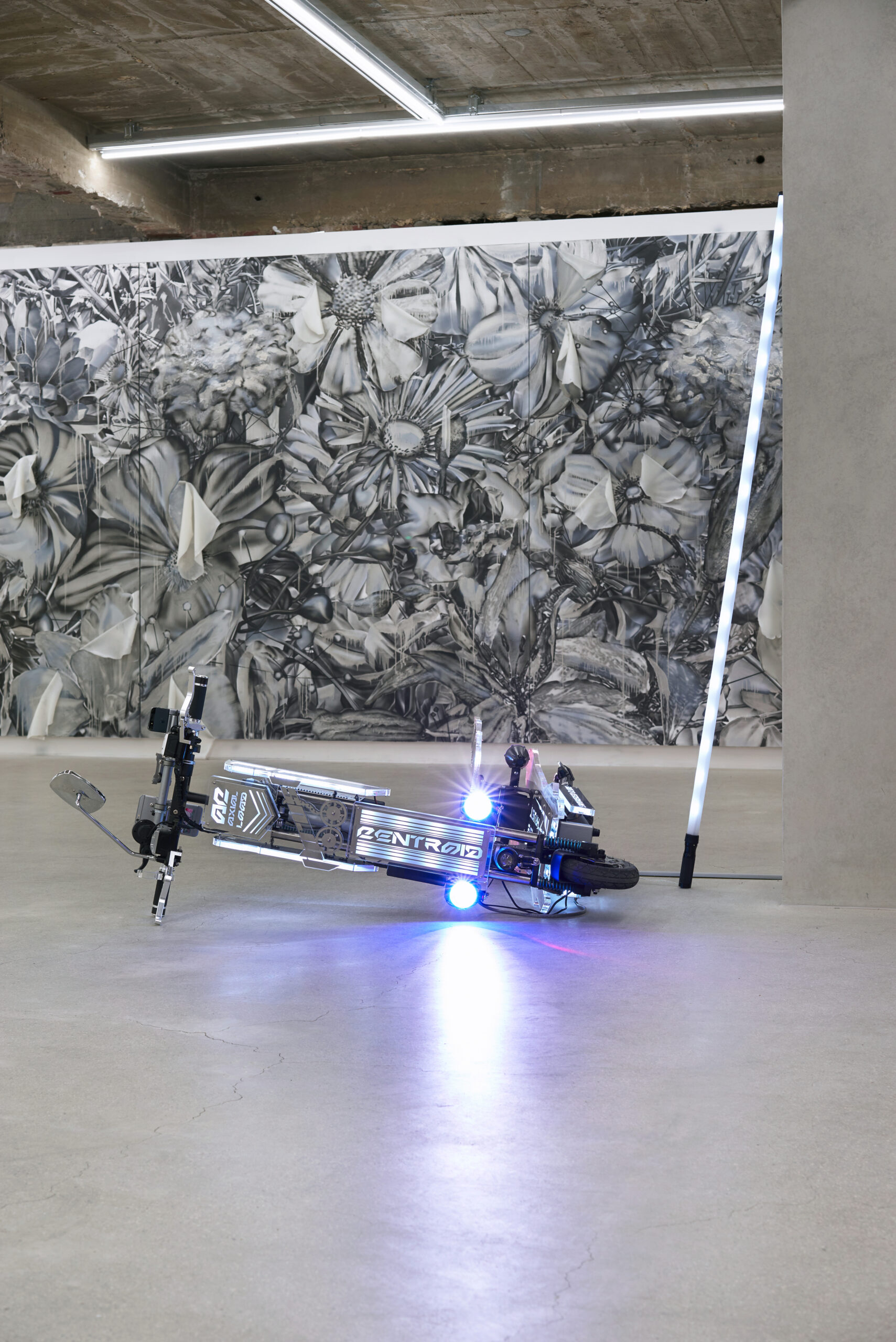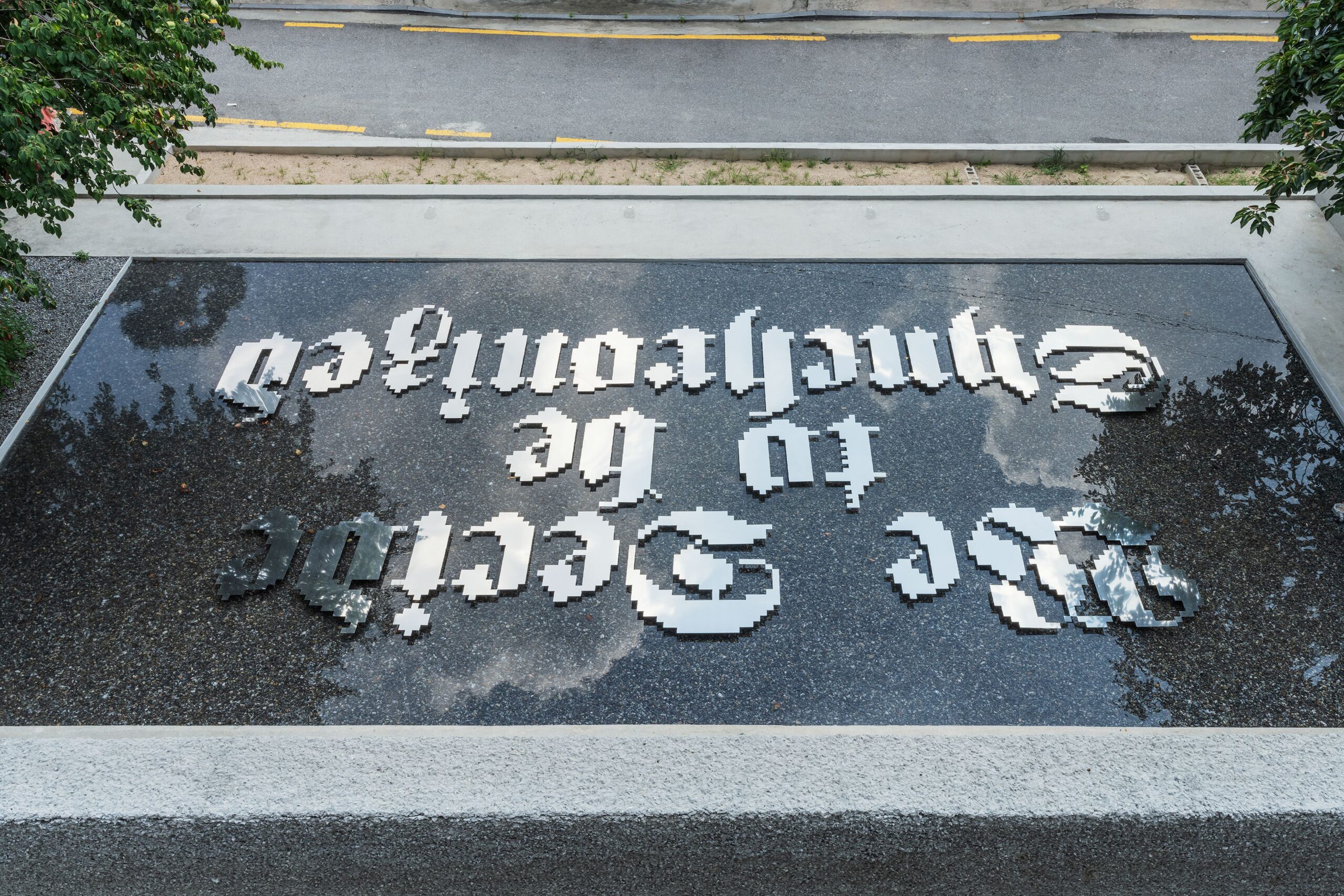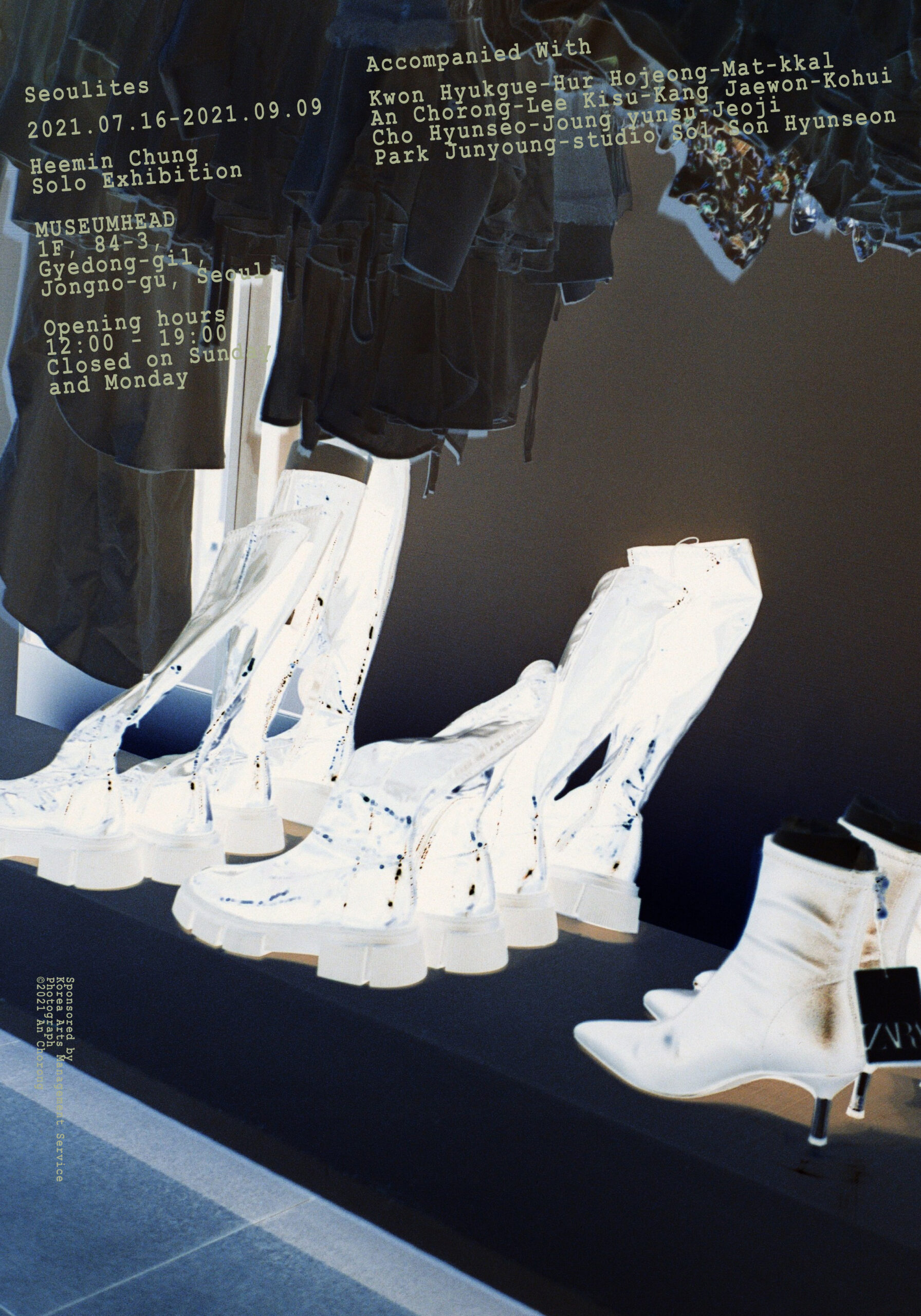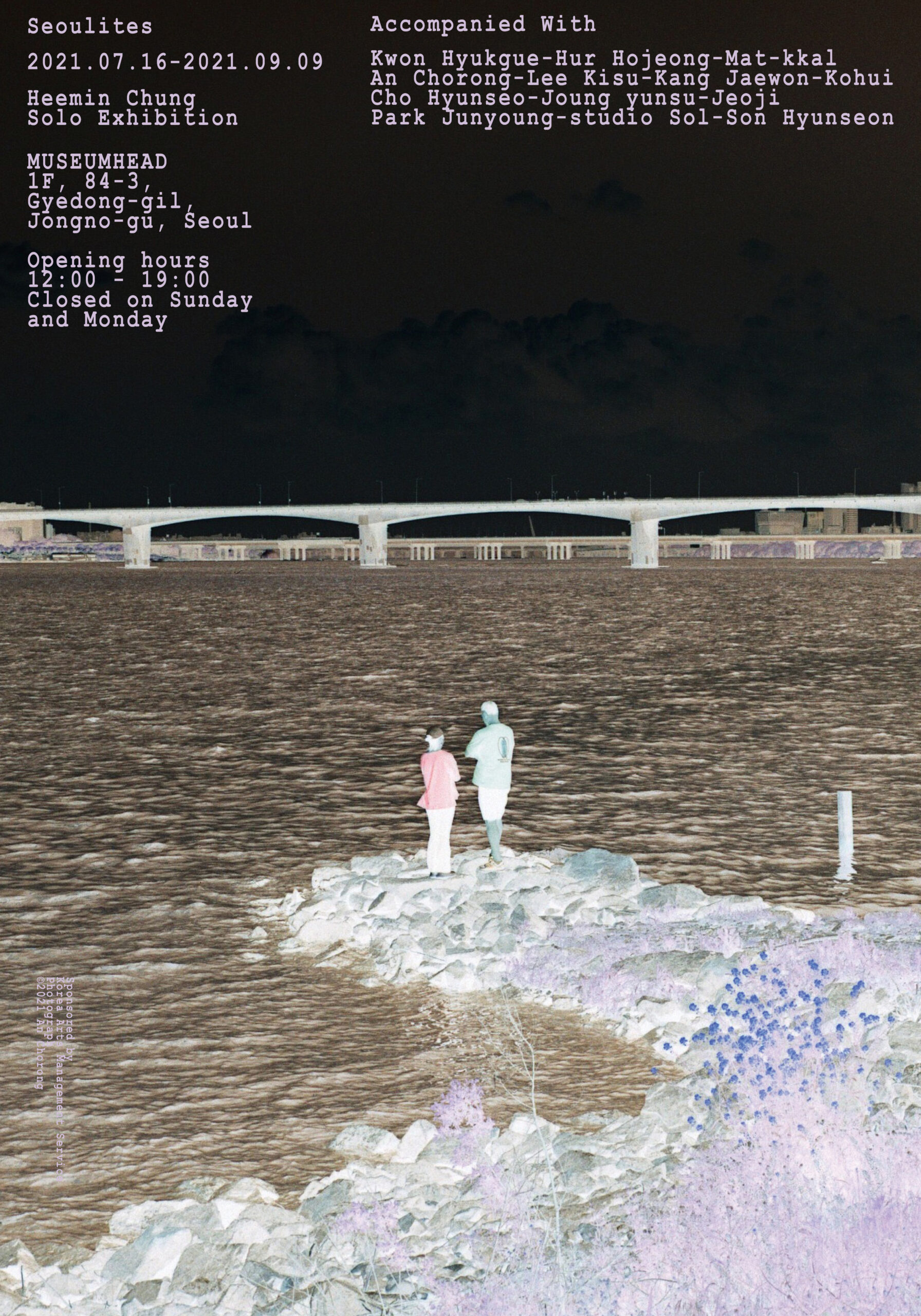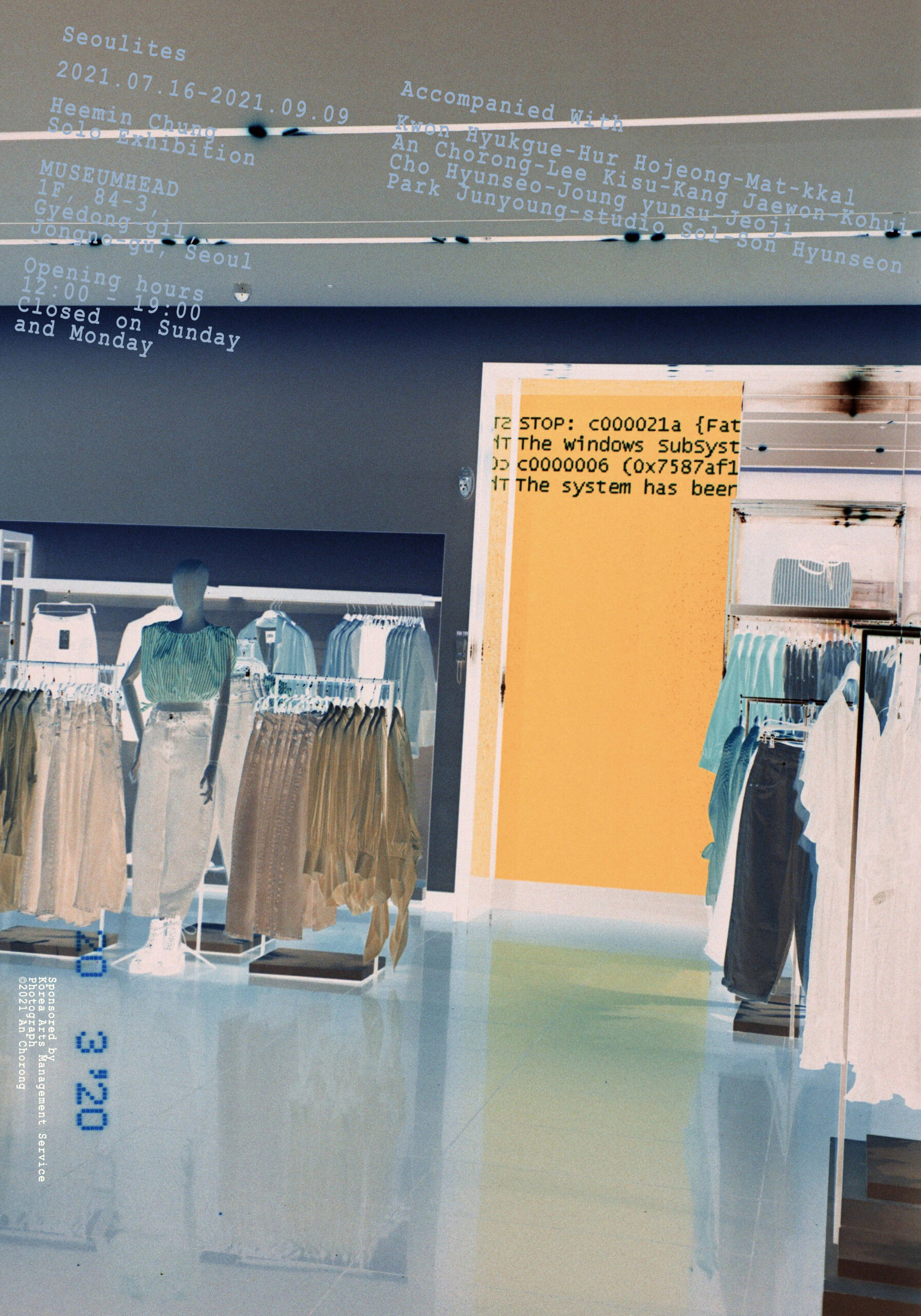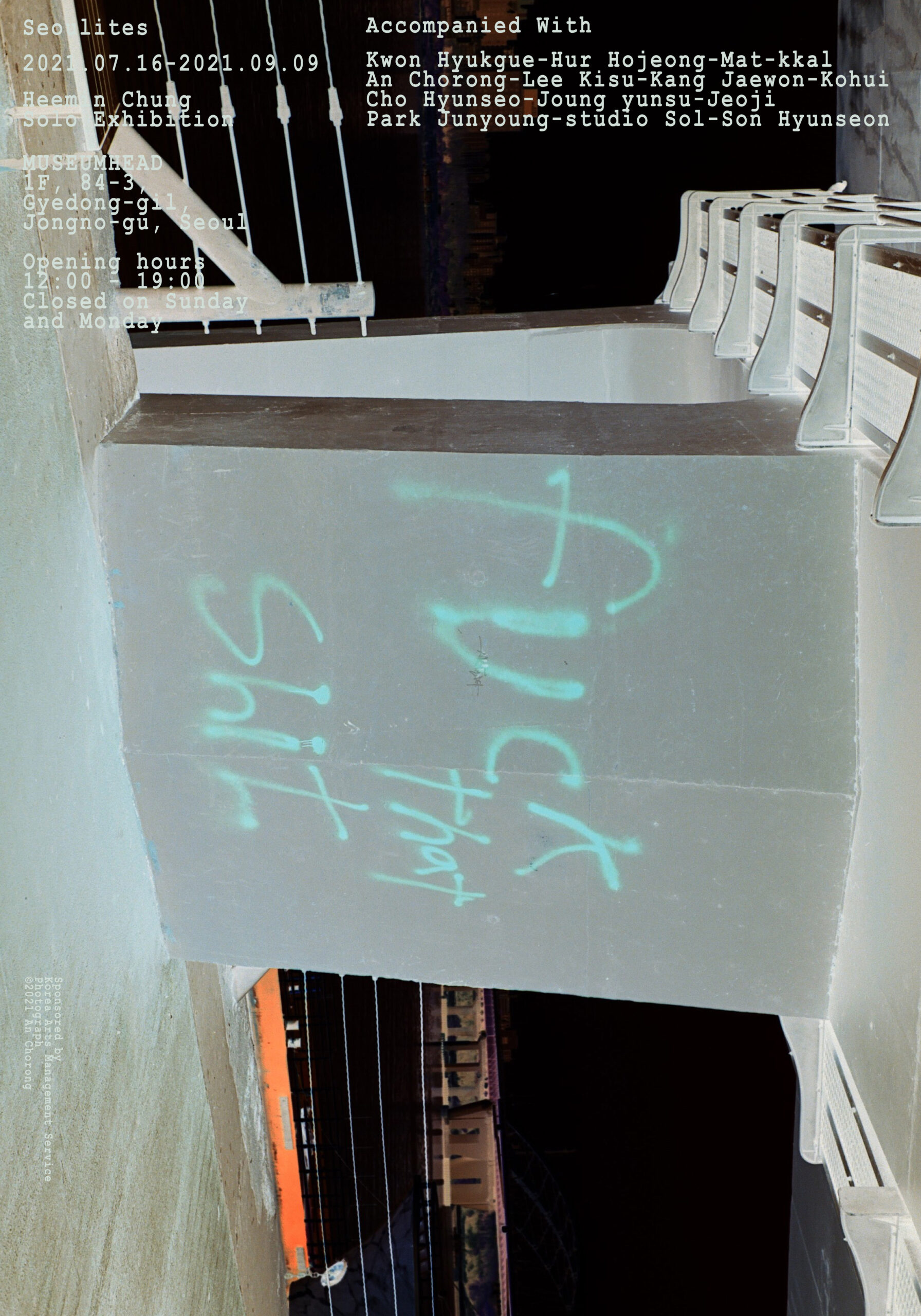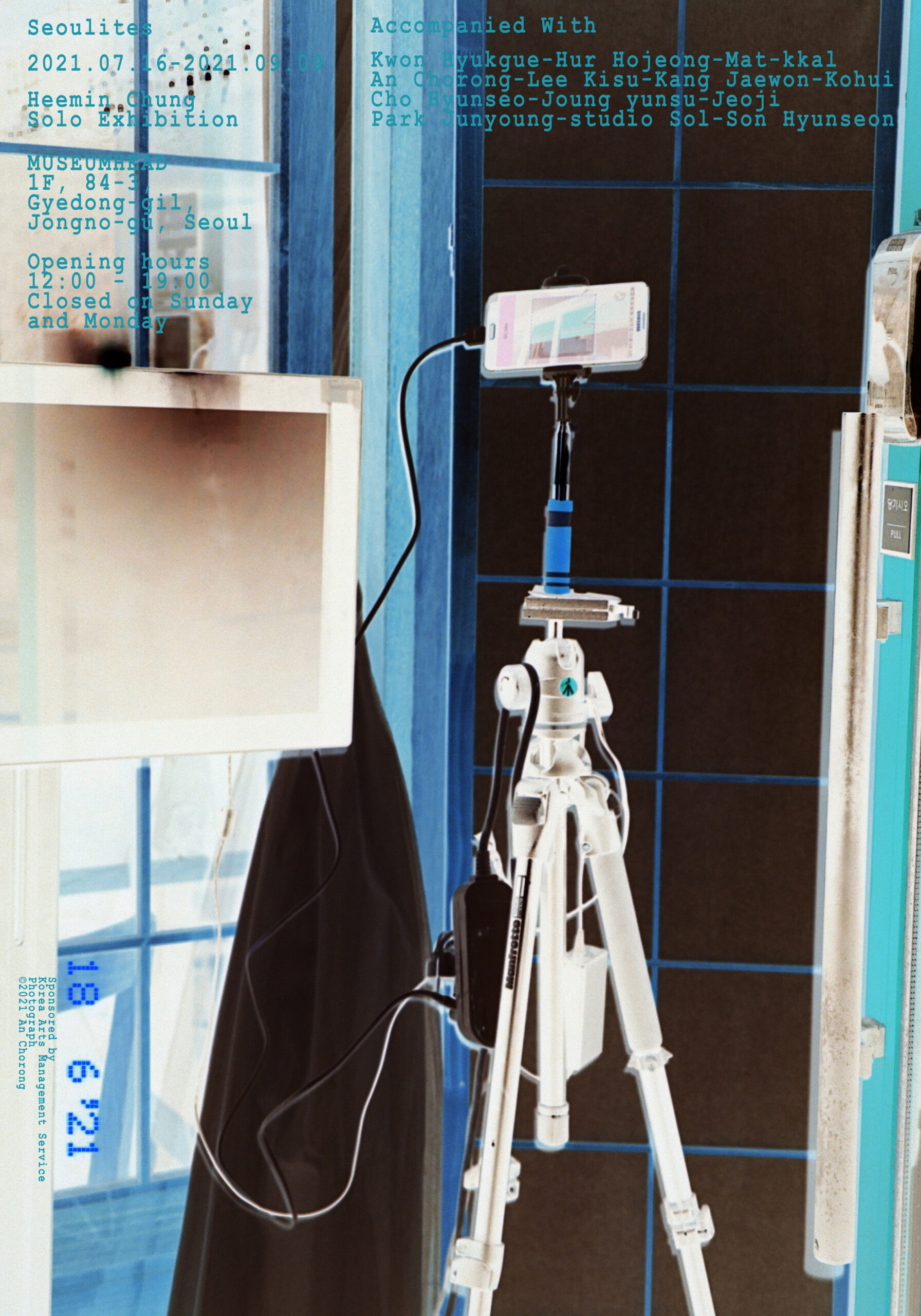《Seoulites》
정희민 개인전
2021.07.16.-09.09.
협업 작가: 맛깔손, 안초롱, 강재원, 6-8(고휘, 조현서, 조지, 정윤수)
포스터 디자인: 맛깔손
포스터 사진: 안초롱
테크니컬 어시스턴트: 이기수
VR 제작: 6-8
VR 협력: studio SOL
VR 자막 번역: 박진원
VR 구조물 제작: 박준영
도움: 손현선
진행: 허호정
글: 권혁규
주최: 뮤지엄헤드
후원: 예술경영지원센터
《Seoulites》
Heemin Chung
16.JUL-09.SEP.2021.
Collaboration with Mat-kkal, Chorong An, Jaewon Kang, 6-8 (Kohui, Hyunseo Cho,
Joungyunsu, Jeoji)
Poster Design: Mat-kkal
Poster Photograph: Chorong An
Technical Assistant: Kisu Lee
VR production: 6-8
VR organizing: studio Sol
VR subtitles translation: Jinwon Park
VR structure: Junyoung Park
Support: Hyunseon Son
Curatorial team: Hojeong Hur
Text: Hyukgue Kwon
Organized by Museumhead
Sponsored by Korea Arts Management Service
사랑은 두 체계가 마주하는, 일종의 대립을 관통하기 마련이다. 양쪽은 마주보는 상태를 통해 만나고 넘쳐흐르며 또 갈라선다. 대칭은 모든 시작과 끝에 연루된다. 수많은 형상들이 충돌하는 서울을 떠올려본다. 여러 대의 스마트폰이 매달린 배달 오토바이, 널브러진 취객과 킥보드, 깨진 아스팔트와 그 사이에 핀 풀꽃, 골목의 고양이들과 올빼미 러닝족 등. 도시의 광휘와 이미지는 제법 선명하게 남지만 그 집단의 주거지는 서울에 사는 사람을 뜻하는 ‘Seoulite’라는 말처럼 얄궂은 어색함과 거리감 속에 사라진다. 그렇게 도시의 몸은 한편 분리되어 있다. 박제된 사물처럼 무기력하게 저 멀리 서있다. 우리는 무엇으로 그 몸에 부딪치는가. 도시를 알아차리고, 또 취한다는 건 무엇을 말하는가. 온갖 상념 속에서도 이미지는 결국 승리하는가. 그건 다시 두루뭉술한 현재를, 부재의 감각을 남기는 일인가.
정희민 개인전 《Seoulites》는 이러한 도시의 감상을 현재의 자각으로 혹은 그것의 보완적 설계로 재송출한다. 전시에서 작가는 캔버스를 마주하는 혼자만의 시간을 여러 스크린, 미디어, 오브제, 텍스트, 그리고 사람들이 동시다발적으로 접속하는 현장에 포개놓는다. 낱낱의 거주지가 한데 모여 도시를 이루듯, 작가는 주 매체로 삼는 회화의 여러 삶을 탐색하며, 매체의 현재를 제한된 프레임이 아닌 확장된 에피소드 안에서 잇따라 작동시킨다. 여기서 도입되는 – 성급한 누군가는 이미 예상했다 할지 모를 – 평면과 이미지, 그리고 텍스트는 불충실한 단언이나 한계의 인정과는 다른, 여전히 회화의 무언가를 재정립할 수 있다는 기대에서 돌아서지 않는 결정이 된다.
이 같은 맥락에서 전시장 앞마당 수반에 설치된 <We Decide to be Synchronized>(2021)는 전시의 테제이자 선언으로 다가온다. “We Decide to be Synchronized.”라는 문구는 급변하는 기술의 지형 안에서 자신의 매체에 대한 비관과 분투의 시간을 직시하고, 또 돌파하겠다는 일종의 주문이자 고백처럼 등장한다. 수면과 비슷한 높이에서 외부를 마음껏 반영하고 있는 작업은 안과 밖, 오래됨과 새로움, 가상과 현실, 관념과 물질 등의 분열을 끊고 양극의 상태를 연동하는 방법을 모색해보길 제안한다.
전시에서 개념적 파사드로 역할하는 <We Decide to be Synchronized>는 공간 내부로 반영되며 다른 작업에 겹쳐진다. 먼저 <I Crawled Out of the Oven>(2021)은 작가 자신을 게임 속 캐릭터나 아바타처럼 등장시키고, 조각난 글씨체의 “hyper productive mediocre”를 그리며 앞서 언급한 매체의 고민과 자조적 주문을 연결시키는 투사의 지점을 마련한다. 또 전시장에서 대형 프레임을 구성하고 있는, 분명한 이미지와 물성으로 출현하는 <Overjoyed>(2021)를 비롯한 몇몇 회화 작업은 (이전보다) 전면화된 미디엄의 활용을 통해 회화 매체를 가상적 파편이 아닌 하나의 물리적 총체로 전달한다. 다시 말해 작가의 이전 작업이 보인 이미지와 물성, 가상과 현실의 대비와 경계, 그리고 위계의 혼재는 이번 전시에서 물화된 이미지로, 하나의 통합된 현전으로 재구성된다. 여기서 주요 모티프로 다시 등장하는 다양한 감각의 꽃들은 그만의 조형성과 생명력을 유지함과 동시에 새로운 기술과 재료, 코드 등과 뒤섞이며 기존의 이미지를 철회하고 또 갱신하는 시도를 분명히 드러낸다. 단편적 매개로서의 꽃을 기각하고 여전히 커다란 흥분이자 변화의 함의로 대상을 재조정하는 것이다.
전시가 설정하는 양가적 대립의 극복은 평면 위의 관계에 그치지 않는다. 오히려 전시는 매체의 관습적 실험과 이동을 경계하며 보다 근본적 차원의 확장을 현실화한다. 전시에 등장하는 다양한 미디어와 스크린, 오브제들은 위 시도를 끊임없이 상기시키는 장치이자 (반대쪽과 나눈) 공모의 단서가 된다. 전시공간에서 회화와 함께 포착되는, 직접적으로 시각적, 물리적, 기능적 경험을 더하는 <Road engine R5 Wating for the Morning to Come>(2021), <Mockup for the Gravestone 3>(2021), <Anchored Drive>(2021)는 평면에 안착된 세계의 3차원적 모델링처럼, 또 데자뷰처럼 나타난다. 과하게 개조된 관종 킥보드와, 비문이 새겨진 윈드스크린, 쓸데없이 기능적인 오너먼트들은 서두에 언급한 도시의 자국처럼 현실적이다 못해 이상하리만큼 낭만적이고 환상적이다. 회화와 관계 맺는 위 작업들은 마치 무언가의 전경처럼 끊임없이 덧대어지고 포개지며 이미지의 감각적, 경험적 확장을 만들어 낸다. 이처럼 이질적 동시성을 지속하는 전시작들은 오늘의 평면을 다양한 차원으로 동기화해보는, 또 세계를 펼친 모양으로 대하려는 일종의 서바이벌 키트(survival kit)로 다가온다.
평면의 시야각을 확장시키는 VR 작업, <Meditation101>(2021)은 관객을 또 다른 연동의 지점에 입장시킨다. 봐야 할 곳을 명확하게 지시하는, 정해진 프레임과 사이즈의 작업들과 달리 <Meditation101>은 관객들에게 보다 능동적인 바라보기를 요청한다. 흔히 말하는 HMD(Head Mounted Display) 장치가 부여하는 과몰입의 상태는 전시를 관통하는 과잉된 감각의 또 다른 변형으로 볼 수 있을 것이다. 또 VR 장치를 이용한 평면의 확장은 스크린 X를 떠올리게 하는 <Overjoyed>, 그리고 현실로부터 격리된 동굴과 라이트박스를 교차시킨 이전 작업의 개념적, 형식적 이행으로 이해된다. 화면의 한계를 뛰어넘으려는 시도가 그것을 펼쳐내는 스크린 X로, 또 화면의 개념 자체를 의문시하는 VR로 전개된 것이다. 전시 동선 말미에 위치하는 작업은 전시 공간과 거의 동일한 가상공간으로 관객을 안내한다. 우리 신체가 물리적으로 발 딛고 있는 지금 여기와 다른 차원의 거기를 동시적 층위(layer)로 감각하게 하는 것이다. 즉 VR속 공간은 특정한 장치를 통해서만 확인 가능한 가설적 무대가 아니라, 관객의 움직임을 실시간으로 감지하고 이에 반응하는 동일한 현재로 제시된다.
전시는 안과 밖, 가상과 현실, 이미지와 물질을 한데 포섭하며 360도의 공간을 만들어낸다. 프레임이 소멸된 세계에서 이미지는 벽 너머의 공간으로 무한 확장될까? 360도의 세계는 눈에 들어오는 모든 장면을 제대로 인지하고 있을까? 돌아오는 건 얼마나 자유롭게 두리번거리냐가 아니라 어디를 보고 어떻게 나아가야 하냐는, 아이러니하게도 지극히 2D적인 과제가 아닌가. 전시는 2D부터 VR까지 이미지를 끊임없이 변환시키며 그것의 인식과 기능을 재정립해간다. 쉬지 않고 이동하는, 어쩌면 완전히 사라질지 모르는 이미지의 다양한 현재를 호출하며 서로 분리되지 않는 상태로, 하나의 현전으로 마주하게 한다.
전시에는 많은 참여자들이 함께한다. 이들은 정해진 역할을 수행하는 장치도 호화로운 몽타주의 구성도 아니다. 참여자들은 평소에 하던 대단하고 사소한 일을 조금 다른 방법으로 진행한다. 그렇게 고립이나 완결이 아닌 관계의 중첩과 연속을 도모한다. 《Seoulites》는 이들이 만든 생경한 도시의 일부를 클로즈업한다. 그 안에 막연한 관계를 극도로 압축하거나 팽창시키는 일을, 또 서로 충돌하는 불꽃놀이의 현장을 계획한다. 이는 앞서 설명한 것처럼 회화의 평면과 그 바깥을, 다양한 양극의 세계를 하나의 ‘회오리’로 몰아세우는 일과 연결된다. 그것은 이미 자리 잡은 시-공간의 이미지를 무감각적으로 수용하기보다 서로 합치될 수 없을 것 같은 세계가 만든 오늘에 과감히 뛰어들어 모종의 당사자성을 획득하고 현재의 이미지를 자각해보는 시도가 아닐까. 그 회오리가 모든 것을 지워버릴지라도 양극의 공모, ‘사랑’으로 오늘은 보다 충만하게 방황하지 않을까.[1]
글 권혁규
[1] 이 글의 마지막 문장은 정희민의 <Erase Everything but Love>(2018)를 떠올리며 쓰였다.
Seoulites
Love is a confrontation of two parties, who stand facing one another. They meet, experience an overflowing of emotion, and, in some cases, end up going their separate ways—all while facing one another. Confrontation, in this sense, is part of all beginnings and endings. Let’s consider Seoul, where countless shapes collide. As can be seen in its delivery motorcycles (each of which is equipped with multiple smartphones), intoxicated pedestrians and scooters sprawled everywhere, cracked asphalt and the flowers that bloom from the cracks, street cats, and night runner crowd, the city’s brilliance and images are sharply focused. The places where these people live, however, are as prone to disappearing into an awkward, faraway realm as the term “Seoulite.” As such, the city’s body is segmented. It stands far in the distance, lethargically, like a taxidermized being. With what do we clash with these bodies? What does it mean to truly know a city—or to be intoxicated? Is the image always victorious, even while lost in thought? Does this mean leaving traces of the nondescript present? Or our sense of what is absent?
Heemin Chung’s solo exhibition, Seoulites, re-transmits views of the city through today’s notion of self-awareness (or as a blueprint that supplements such notion). Chung takes the time that an individual might use to appreciate an artwork alone and “pastes” it into screens, digital media, objects, text, and locations that can be accessed by many people simultaneously. Just as various residential formats come together to form a city, Chung explores several lifestyles through the painting (her primary medium) to present to us the genre’s current status not through a limited framework but the realm of much broader “episodes.” The two-dimensional medium, images, and text that are incorporated for this—things that some may insist they already anticipated—are neither faithless declarations not an acknowledgement of limitations. They form the immutable stance that there is still hope for the genre of painting to be refigured.
It is inspired by this that We Decide to be Synchronized (2021), which has been installed in the small pond in the venue’s courtyard, serves as the exhibition’s central motto. The sentence (“We decide to be synchronized”) is a confession and incantatory statement, of sorts, that represents the artist’s awareness of her pessimism and inner turmoil about her genre amid today’s fast-changing technological landscape and her desire to overcome such negative emotions. The letters, which are positioned at water level and reflect their outdoor surroundings, suggests that we do away with divisive dichotomies (inside and outside, oldness and newness, real and virtual, conceptual and material, etc.) and, instead, find ways to link such opposites.
We Decide to be Synchronized, the exhibition’s “conceptual façade” overlaps with several (indoor) artworks. The first is I Crawled Out of the Oven (2021), in which Chung portrays herself as a game character or avatar. The fragmented script, which reads “hyper-productive mediocre,” creates a spot for the aforementioned concerns about painting to be projected. Several paintings, including Overjoyed (2021), a large painting that covers an entire wall that is made up of concrete images and materiality, uses larger canvases (than previously typically used by Chung) to convey the potential of the genre as not a collection of virtual shards but a concrete, material whole. In other words, the contrast between image and materiality and the virtual and the real (as well as the hybridity of hierarchy) shown in Chung’s previous works are reorganized in this exhibition as images that come vaguely together into a single presence. The flower, which is a major motif in Chung’s art, is used in various forms: each maintains a unique shape and vitality while also incorporating new technologies, materials, and cultural codes, making clear the artist’s desire to do away with the image traditionally embodied by her flowers and establish a new one in its place—the replacement of the flower as a fragmentary medium with a new identity as a “subject of immense excitement and implication of change.”
The act of overcoming the dualistic conflicts pointed out in this exhibition is not limited to relationships depicted using two-dimensional mediums. In fact, the exhibition is wary about “conventional” experimentation and transfers of medium—a wariness through which it expands the realm for such conflict resolution on a fundamental level. The diverse media devices, display screens and objects that appear in the exhibition venue are tools that constantly remind us of the aforementioned endeavor as well as proof of a “conspiracy” with the opponent. Road engine (2021), Mockup for the Gravestone 3 (2021), and Anchored Drive (2021), which are arranged alongside the paintings to add visual, material, and functional “background” to them, appear as 3D models or a deja-vu of the two-dimensional world. An “attention-hungry” scooter that has been restructured excessively, a windscreen that is inscribed with a profanity, and unnecessarily-functional ornaments are, like the traces of the city mentioned in the beginning, distanced from reality to the point of being abnormally romantic or fantastic. These artworks, which are linked to the paintings, are, like a panorama of something, constantly pasted onto one another to ensure an image’s sensory and experiential expansion. All of the exhibition’s artworks, which are characterized by such disparate simultaneity, are like “survival kits” that synchronize the realm of 2D in diverse ways and try to interact with the world in unfolded/opened form.
Meditation101 (2021), a VR work that expands the 2D viewing angle, brings the museumgoer into yet another point of connection. Unlike artworks of predetermined frame and dimensions that clearly tell us where to look, Meditation101 asks the visitor to go about the work of viewing more proactively. Indeed, the state of over-immersion provided by the HMD (head-mounted display) is a variation of the theme of excessive sensation that pervades the exhibition. Its expansion of 2D through a VR device is also a conceptual and structural extension of Overjoyed, which brings to mind Screen X, and other previous creations that feature a cave (cut off from reality) with a lightbox. The desire to transcend the limitations of the screen is expressed as Screen X or a VR device, which questions the concept of the canvas itself. The artwork, which is the last stop of the exhibition, ushers the visitor into a virtual space that is almost identical with the exhibition venue, allowing us to experience the here-and-now, which our bodies are physically inhabiting, and the realm of “somewhere else” as simultaneous layers. In other words, the VR space is not a hypothetical stage that can only be seen through a particular device: it is a very present and valid reality that detects visitors’ movements in real-time and is able to respond to them.
The exhibition brings inside/outside, virtual/real, and image/material dichotomies into one 360-degree space. In a world in which the concept of the frame has been destroyed, can an image extend infinitely into the space beyond the wall? Is the 360-degree world adequately aware of everything that it can encompass? Isn’t our task, ultimately, not the question of how freely we are able to look around but where to look and which direction to move in—which is, ironically, very 2D? The exhibition, by constantly converting images (ranging from 2D to VR), re-builds our perception of and the functions of each. It calls upon the many realities of images that move ceaselessly (or may very well disappear) and invites us to see them in non-segmented, unified form.
The exhibition has many participants. They are neither devices that each perform a designated role or components of an elaborate montage. They simply engage in their usual tasks (both significant and trivial), albeit in slightly different ways, thereby moving toward an overlapping continuity of relationships as opposed to isolationist completion. Seoulites is a close-up of part of the unfamiliar city that the participants have thus created. They make extremely condensed or expanded versions of the vague relationships formed in this city or, at other times, create colliding displays of fireworks. This connects, as explained earlier, to the task of bringing together the painting’s two-dimensionality and the world outside it through diverse polarized realms as a massive “whirlwind”—a task which, rather than tonelessly accepting already-established images of time-space, attempts to jump head first into today (which was made by a world in which unity of stance seemed impossible) to approach contemporary images as a participant and not an onlooker. Even if that whirlwind destroys everything, our today will be able to exist in a more fleshed-out state through that “conspiracy of both sides:” love.*
Kwon Hyukgue
*The final sentence of this preface is based on the author’s recollection of Heemin Chung’s Erase Everything but Love (2018).



